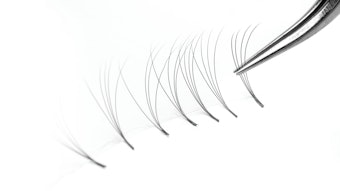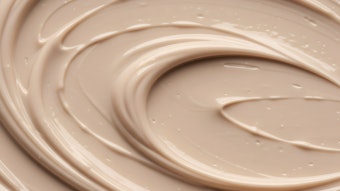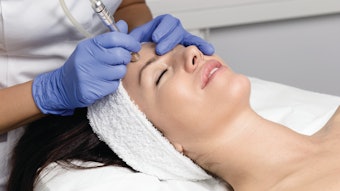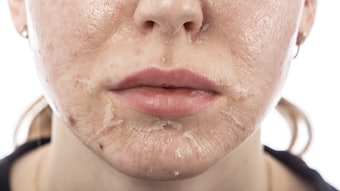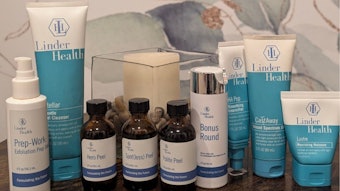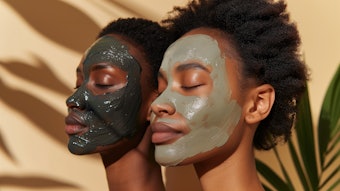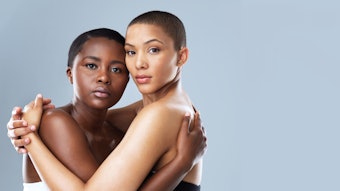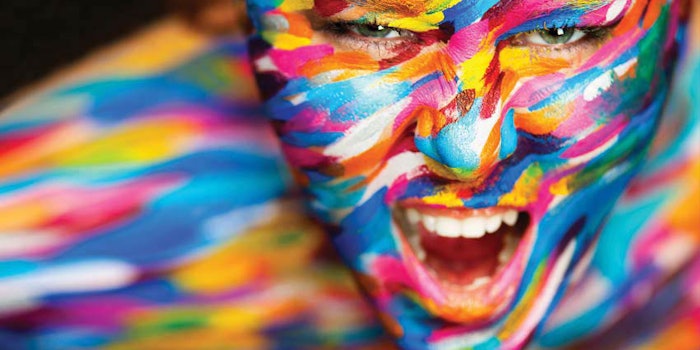
The human population is made up all different types of people with a wide variety of ethnic backgrounds. Each ethnic group has its own general traits in regard to skin, hair and eye color, but as we know all too well, ethnicity is more of a broad spectrum of shades and traits rather than a segmented list. This can make it difficult both to understand our clients’ skin, and to develop a good treatment plan for their skin concerns. Learning about what comprises skin color, asking questions and researching what treatments work on different skin types is important to the skin care professional.1
This article will first delve into pigment production, skin classifications and ethnicity characteristics before exploring sensitivity issues related to specific ethnicities.
3 Factors of Skin Color
 There are three compounds that affect the tone and hue of skin: melanin, hemoglobin and carotene. As we know, melanin is the strongest influencer of skin color, folowed by hemoglobin and carotene, respectively.
There are three compounds that affect the tone and hue of skin: melanin, hemoglobin and carotene. As we know, melanin is the strongest influencer of skin color, folowed by hemoglobin and carotene, respectively.1. Melanin
Melanin contains compounds (pheomelanin and eumelanin) that make pigment and is easily the most talked about attribute of skin color. Whereas eumelanin contains more brown and black hues, pheomelanin produces red and pink hues. The level of chemical activity as well as the shape, size, quantity and distribution of color is what leads to the variation in skin color. A more pale yellow color tends to occur if there is a lower level of melanin production in cells. Conversely, a higher production produces a darker skin tone.2
Melanin in the skin protects the cells of the body from ultraviolet radiation damage. If a person is exposed to more sun, melanocytes will make more pigment to protect the cells’ DNA. Melanocytes can be found in larger quantities in the face, nipples, mucous membranes, eye areas and even the limbs. Vitiligo can occur when melanocytes are destroyed, though the cause of this destruction is not known.
2. Hemoglobin
Hemoglobin is an iron-based molecule that carries oxygen in the blood and gives blood its red color. Hemoglobin and oxygen create a healthy “flush” to the skin. Varying levels of hemoglobin are most easily apparent in Caucasians. If there is not enough oxygen, skin color tends to look more pale blue or greyish in color.
3. Carotene
Carotene is a potent antioxidant that is orange/yellow in color. Carotenoids are found in fruits and vegetables that are orange, yellow or red, and in the yolks of eggs. They are also present in skin to help protect cells against oxidative damage. Carotenoids are converted in the body to a form of vitamin A, which helps promote skin health and is essential for good vision.
 When a person’s diet contains a high ratio of beta-carotene, their skin and/or eyes may appear more yellow in nature, which can be mistaken for a liver dysfunction such as jaundice. People of Asian or American-Indian descent also tend to have more carotene in their stratum corneum and fatty areas of the dermis and subcutaneous tissue.
When a person’s diet contains a high ratio of beta-carotene, their skin and/or eyes may appear more yellow in nature, which can be mistaken for a liver dysfunction such as jaundice. People of Asian or American-Indian descent also tend to have more carotene in their stratum corneum and fatty areas of the dermis and subcutaneous tissue.Fitzpatrick and Lancer Scales
In the past, skin care professionals have relied on the standard Fitzpatrick Scale for classifying skin, which provides six standard skin types. This system was developed in 1975 by Harvard Medical School dermatologist Thomas Fitzpatrick, M.D., Ph.D. Today, many skin care professionals still use it to determine what facial treatments work or which are contraindicated for various skin types. The Fitzpatrick Scale also groups different complexions and their reactions to sunlight.3
Another method used by some is the Lancer Ethnicity Scale, developed by Harold A. Lancer, M.D., F.A.A.D. This approach looks at patients in more depth prior to performing treatments like cosmetic laser or chemical peels. Lancer set out to prevent scarring, pigmentation and adverse reactions, all while encouraging faster healing. The scale is broken down into five risk factor types. While the Fitzpatrick scale looks at the skin’s reaction to sunlight, Lancer’s looks at the ethnic background, including genealogy.4
Skin professionals cannot judge skin based solely on its reaction to sunlight, as a person could be a Fitzpatrick VI (the darkest skin tone) but also be a Lancer Risk Factor5 (considerable risk). Therefore, provided next are some characteristics to consider when looking at Fitzpatrick scales in combination with Lancer ethnic concerns.
 Skin Sensitivities
Skin SensitivitiesThe nature of skin sensitivity may vary between different ethnicities and/or skin types, but sensitive skin is overall on the rise. The reasons for skin sensitivity can be due to a variety of challenges including ethnic origin.
A few examples of general reactions based on ethnic origin are: Asian skin tends to react to spicy food and Caucasian skin may react more to weather or environmental changes with more visible symptoms. However, even people in similar ethnicities can see varying sensitivities. The skin care professional must look at the ethnic background along with age, medications, hormonal issues, environment, allergies, diet, etc. They cannot just assume certain sensitivities are not present due to skin color.5
For example, don’t assume that darker skin tones cannot burn or experience rosacea, as these are harder to detect on darker skin tones. Other general issues that come into play with fair, medium and darker skin tones may play into ethnic origins. Examining these will offer a few ideas for treatments and products.
Fair. Fair-skinned clients with sensitive conditions should use gentler anti-aging treatments and products. Since they tend to show aging earlier in life, skin care professionals should avoid treatments that will pigment, scar or even age their skin faster. Glycated skin is also an issue with fair skin, and broken capillaries are easily seen—so repairing and protecting the barrier function will be key for this skin tone.
Carnosine (L) benfotiamine fights the glycation process and helps to protect and maintain collagen integrity for more youthful, less-inflamed skin. In addition, Albizia julibrissin is a natural anti-glycation ingredient from the Persian silk tree that renews skin tone and texture while reducing dark circles. Finally, vitamin C is useful for brightening fair skin.6
Medium. Clients with medium skin tone often experience more oily skin, breakouts and facial hair. If this client is sensitive to oily concerns, try using products that do not strip the skin and balance and purify instead. Using acids like mandelic in lower percentages and gentle enzymes may be more effective on medium skin tones.
Dark. Clients having sensitive darker skin need to worry about keloid scarring and pigmentation issues from more aggressive treatments. There also may be issues with more hair growth in these clients.1 Remember rosacea or sunburn sensitivities, as mentioned earlier, as well. Barrier repair, hydration and calming are key. Mirabilis jalapa extract is successful at calming reactive skin, improving skin’s long-term resilience against sensitivity triggers, supporting skin’s barrier function and improving hydration.
Investigate First
Taking these different rating scales into consideration before performing treatments can be daunting but is necessary to “do no harm.” Having a really good intake form and asking a variety of questions, including gathering info about medications, health challenges and lifestyle, will also help. We have to look past what we see before our very eyes and consider that a person’s ethnic origins can help us make a better-informed decision for creating a treatment plan that produces optimal results and less room for adverse reactions.
REFERENCES
- www.jaad.org/article/S0190-9622(03)00343-8/abstract?cc=y=>
- www.webexhibits.org/causesofcolor/7F.html
- www.dermatology.ca/skin-hair-nails/skin/photoaging/know-your-skin-type/
- http://onlinelibrary.wiley.com/doi/10.1002/(SICI)1096-9101(1998)22:1%3C9::AID-LSM4%3E3.0.CO;2-T/abstract
- C Burgess and B Johnson, Skin Diseases in Ethnic Skin, ch 35 in Sauer’s Manual of Skin Diseases, B Hall and J Hall, eds., Lippincott Williams & Wilkins: Philadelphia (2010)
- L Walker, The Skin Care Ingredient Handbook, Revised and Expanded Edition
(Websites Accessed Aug 16, 2016)
